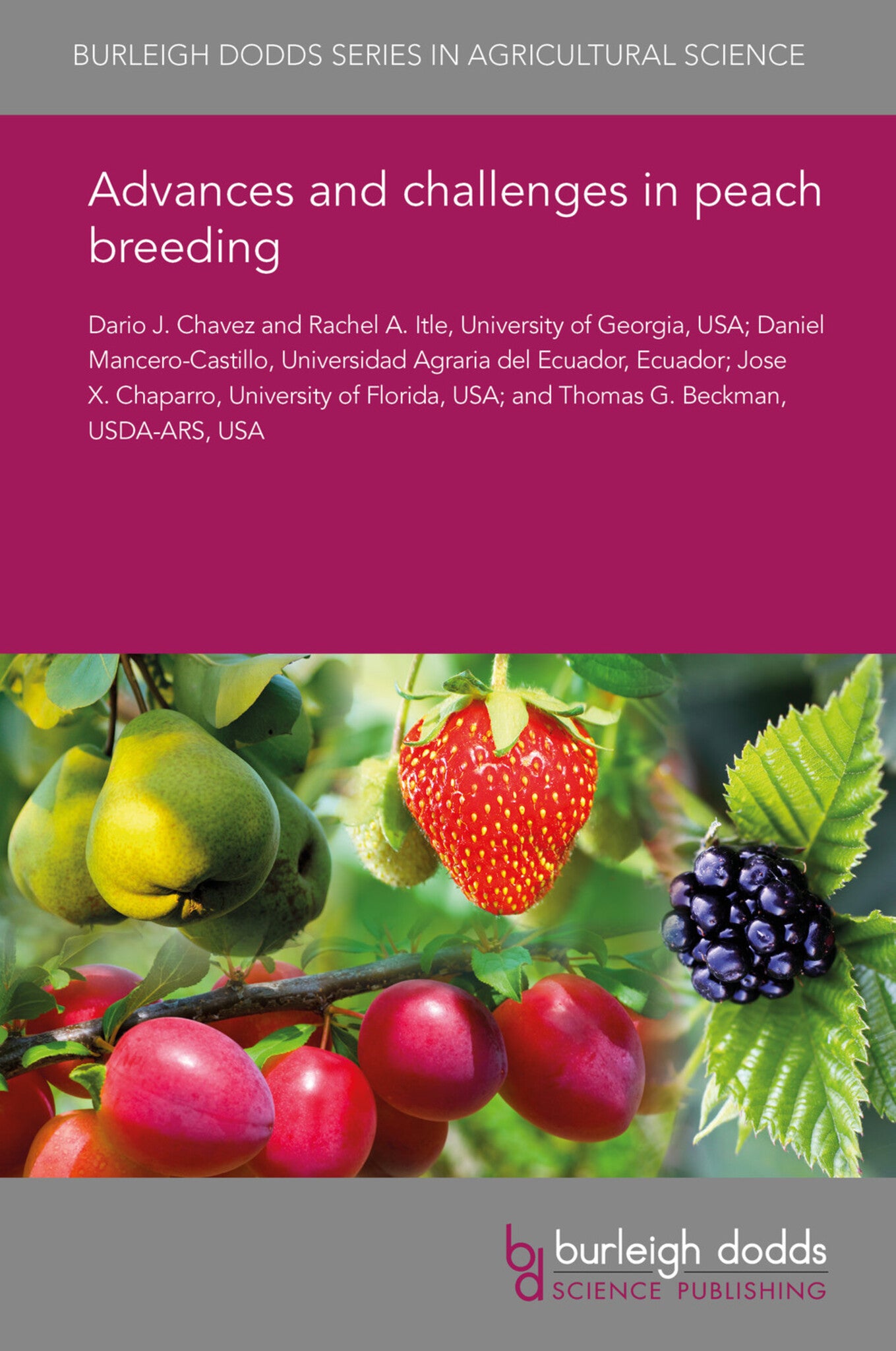We're sorry. An error has occurred
Please cancel or retry.
Advances and challenges in peach breeding
Dr dario j. chavez,
Dr rachel a. itle,
Dr daniel mancero-castillo,
Dr jose x. chaparro,
Dr thomas g. beckman
Regular price
£25.00
Sale price
£25.00
Regular price
£25.00
Unit price
/
per
Sale
Sold out
Re-stocking soon
Peaches are found in diverse climates and growing regions, plus its relatively short juvenile period, self-pollinated fruitfulness, small genome size and important identified Mendelian traits have ...
Read More

Some error occured while loading the Quick View. Please close the Quick View and try reloading the page.
Couldn't load pickup availability
- Format:
-
29 June 2019

Peaches are found in diverse climates and growing regions, plus its relatively short juvenile period, self-pollinated fruitfulness, small genome size and important identified Mendelian traits have made peach a model fruit for breeding and genetics research. This chapter reviews the moderate chill peach variety development programme that commenced in the United States in 1986 as a cooperative regional effort involving the USDA-ARS, the University of Georgia and the University of Florida, and is located at the University of Georgia Research and Education Center outside of Attapulgus, Georgia. The chapter reviews the identification of a locus for resistance to peach fungal gummosis (PFG) and looks ahead to future research trends in this area.

Price: £25.00
Publisher: Burleigh Dodds Science Publishing
Imprint: Burleigh Dodds Science Publishing
Series: Burleigh Dodds Series in Agricultural Science
Publication Date:
29 June 2019
ISBN: 9781838798079
Format: eBook
BISACs:
TECHNOLOGY & ENGINEERING / Agriculture / Sustainable Agriculture, Commercial horticulture, SCIENCE / Life Sciences / Horticulture, TECHNOLOGY & ENGINEERING / Agriculture / Agronomy / Crop Science, Botany and plant sciences, Sustainable agriculture, Agronomy and crop production, Pest control / plant diseases

1 Introduction 2 History of the cooperative regional moderate chill peach variety development project 3 Case study: breeding for resistance to PFG 4 Future trends and conclusion 5 Where to look for further information 6 References



